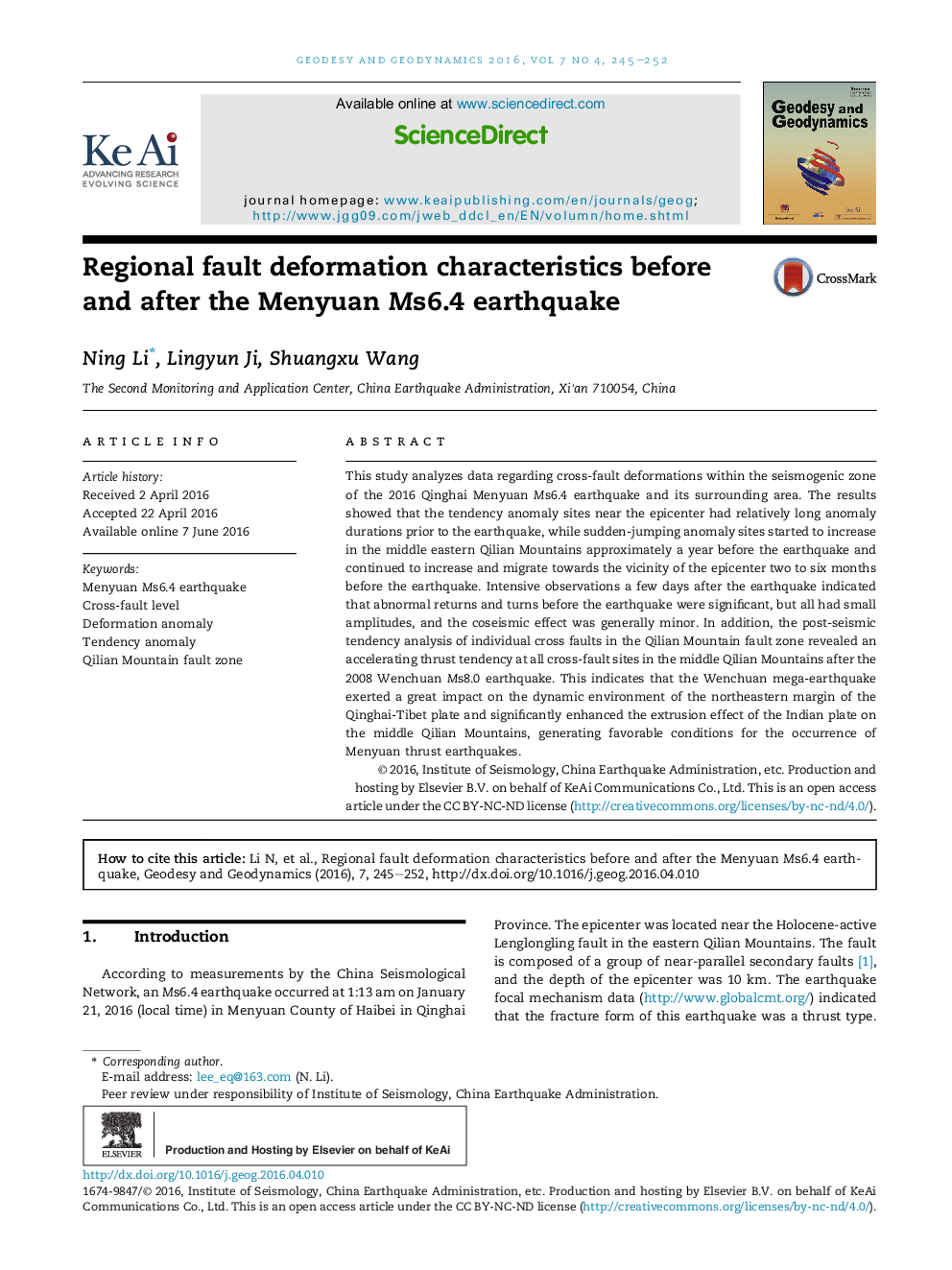| Article ID | Journal | Published Year | Pages | File Type |
|---|---|---|---|---|
| 4683491 | Geodesy and Geodynamics | 2016 | 8 Pages |
This study analyzes data regarding cross-fault deformations within the seismogenic zone of the 2016 Qinghai Menyuan Ms6.4 earthquake and its surrounding area. The results showed that the tendency anomaly sites near the epicenter had relatively long anomaly durations prior to the earthquake, while sudden-jumping anomaly sites started to increase in the middle eastern Qilian Mountains approximately a year before the earthquake and continued to increase and migrate towards the vicinity of the epicenter two to six months before the earthquake. Intensive observations a few days after the earthquake indicated that abnormal returns and turns before the earthquake were significant, but all had small amplitudes, and the coseismic effect was generally minor. In addition, the post-seismic tendency analysis of individual cross faults in the Qilian Mountain fault zone revealed an accelerating thrust tendency at all cross-fault sites in the middle Qilian Mountains after the 2008 Wenchuan Ms8.0 earthquake. This indicates that the Wenchuan mega-earthquake exerted a great impact on the dynamic environment of the northeastern margin of the Qinghai-Tibet plate and significantly enhanced the extrusion effect of the Indian plate on the middle Qilian Mountains, generating favorable conditions for the occurrence of Menyuan thrust earthquakes.
